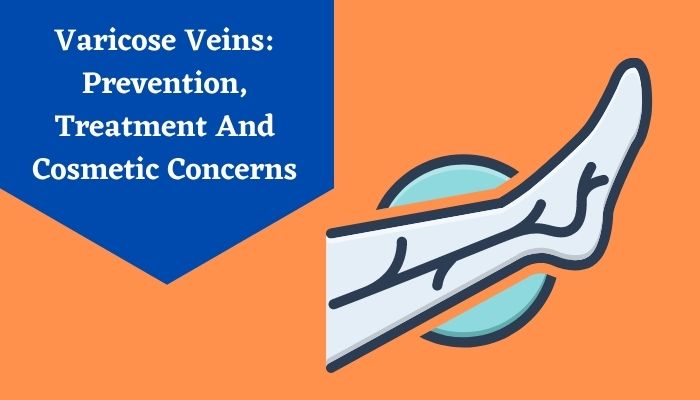Varicose veins can be described as enlarged, swollen, and twisting veins. These veins often appear blue or dark purple in colour. There are several reasons why one might have varicose veins. However, the most common reason is the occurrence of faulty valves in the veins that allow the blood to flow in the wrong direction or simply pool in a place.
According to statistics, almost 1 in 4 adults are affected by varicose veins and pregnant women are more susceptible to this condition. Some symptoms of varicose veins include swollen ankles, aching legs, and spider veins. Individuals who are overweight are also at a higher risk of suffering from varicose veins.
It should be noted that in most cases one does not need treatment of varicose veins. However, if an individual is suffering from swelling, aching, or painful legs due to varicose veins, then he or she should get the best treatment for varicose veins. Some possible treatments include sclerotherapy and spider vein treatment.
Today, we’ll take you through everything that you need to know about the prevention, treatment, and cosmetic concerns related to varicose veins and spider veins of the face.
The Symptoms
There are some symptoms that are associated with varicose veins. These symptoms are:- Veins look twisted, swollen, and lumpy or bulging
- The veins appear blue or dark purple in colour
- Aching legs
- Legs feel very heavy after exercise or at night
- A minor injury results in the affected area bleeding for longer than normal
- Swollen ankles
- Fat under the skin becomes very hard and results in skin shrinking
- Occurrence of spider veins
- Shiny skin discoloration near the varicose veins
- Venous eczema
- Frequent leg cramps
- Restless legs syndrome
- Irregular white patches that look like scars near the ankles
The Causes
Usually, veins have one-way valves. This allows the blood to only travel in a single direction. However, if the walls of the vein become stretched and less flexible or elastic, then the valves will get weaker.A weakened valve will allow blood to leak backwards and eventually flow in the opposite direction. When this occurs, blood can accumulate in the veins. This results in the vein becoming enlarged and swollen.
It should be noted that the veins furthest from the heart are most affected by this condition. This is why it is quite common to see varicose veins in the legs. This happens because gravity makes it harder for the blood to flow back to the heart. Beyond this, conditions that put pressure on the abdomen like pregnancy, constipation, and tumours also increase the chances of causing varicose veins.
How is Varicose Vein Diagnosed?
Doctors usually conduct a physical examination to determine whether an individual is suffering from varicose veins or not. During the physical examination, the patient would be asked to stand while the doctor checks for any signs of swelling. Apart from this, there are also some other diagnostic tests that might be performed. These diagnostic tests are:- Doppler Test: This test includes an ultrasound scan to check the direction of blood flow within the veins. During this test, the doctor also checks for blood clots or obstructions that might be present in the veins
- Color Duplex Ultrasound Scan: This test provides colour images of the structures of the veins. This helps the doctor in identifying any abnormalities that might exist. This test also helps in measuring the speed of blood flow
The Treatment Options
As mentioned earlier, if you are not bothered by the appearance of varicose veins and you are not suffering from any harmful symptoms, then you don’t necessarily need treatment for this condition. However, if you are experiencing pain and discomfort or have cosmetic concerns due to varicose veins, then you should get it treated. Some treatment options that one can opt for are mentioned below.- Surgical Removal
In the case of smaller veins or spider veins, one can opt for laser treatments. During this treatment, strong bursts of light are applied to the veins. This allows the veins to gradually fade and disappear.
- Ligation and Stripping
This procedure does not require any hospital stay. However, most patients will need 1-3 weeks to recover fully from the treatment. This is why if you do opt for this treatment, then you should take some time off work.
- Sclerotherapy
Beyond this, there are also some home remedies that one can practice to prevent the worsening of this condition. Some of these home remedies are:
- Exercising
- Losing weight
- Raising the legs
- Avoiding prolonged sitting
- Avoiding prolonged standing
- Topical creams and emollients for soothing pain and improving the general appearance of varicose veins
- Compression stocking
The Prevention
Do you want to learn how you can prevent the occurrence of varicose veins? If yes, then we have created a list of a few tips related to the prevention of varicose veins that you can follow. These prevention tips are mentioned below.- Get plenty of exercises
- Maintain a healthy weight
- Avoid standing still for extended periods of time
- Do not sit with your legs crossed
- Sit with your feet raised on a pillow
- Sleep with your feet raised on a pillow
- If you have to stand for prolonged durations, then make sure to move around at least once every 30 minutes.



